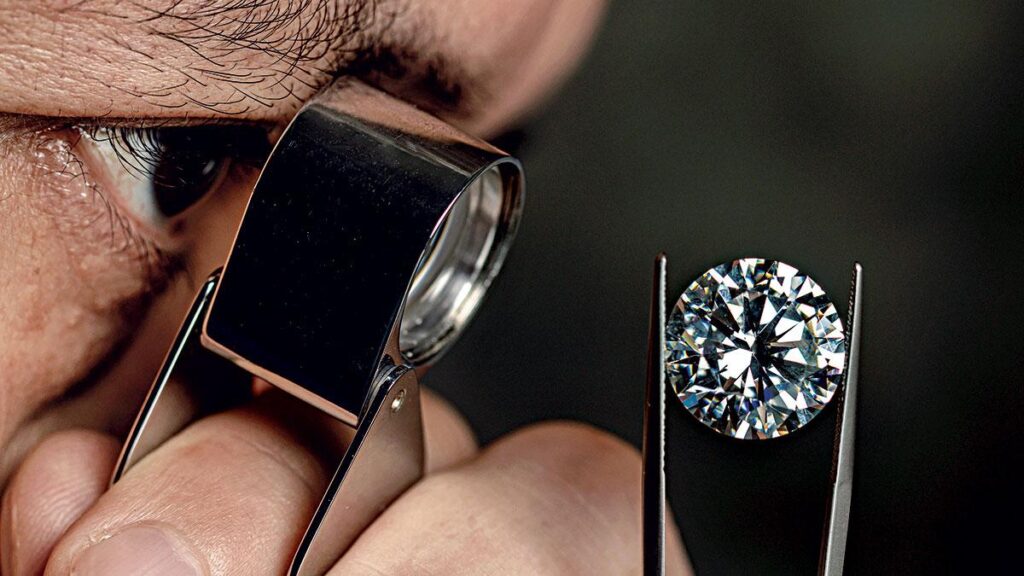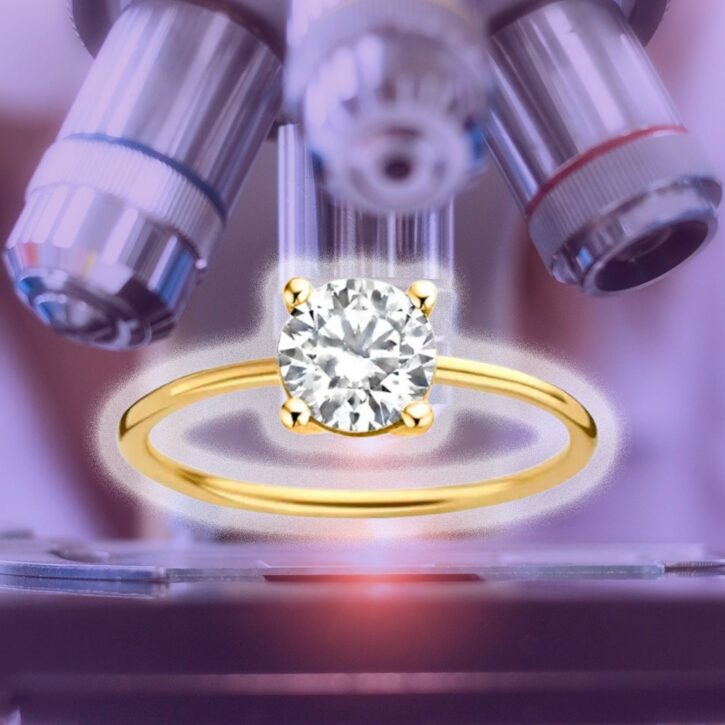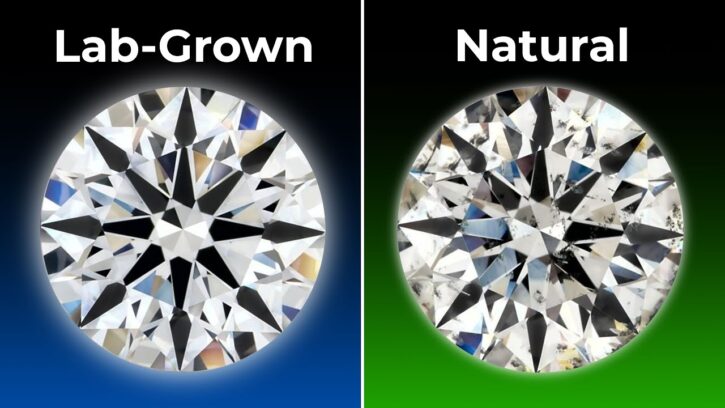
Source: businesstoday.in
Diamonds have long been regarded as a symbol of luxury and prestige. Traditionally, these coveted gems were formed deep within the Earth’s crust over millions of years. However, a new revolution is underway in the jewelry industry with the emergence of lab-grown diamonds. These lab-created diamonds are capturing the attention of consumers and reshaping the market. In this blog post, we will delve into the science behind them, compare them to their natural counterparts, explore their environmental and ethical implications, analyze their economic viability, examine the technology used in their synthesis, discuss quality and grading standards, and understand their growing popularity. So, let’s dive in!
The science of lab-grown diamonds: How they are created

They are created through a fascinating scientific process that mimics the conditions under which natural diamonds are formed. By utilizing two primary methods, High Pressure-High Temperature (HPHT) and Chemical Vapor Deposition (CVD), scientists are able to accelerate the gem-growing process. In the HPHT method, a small stone seed is subjected to extreme pressure and temperature, allowing carbon atoms to crystallize around it and form a larger gem. On the other hand, CVD involves the deposition of carbon atoms onto a diamond seed in a controlled chamber. Both techniques yield stunning stones with identical physical and chemical properties to natural ones.
Comparing natural and lab-grown diamonds: Similarities and differences
Natural and lab-grown diamonds, with their remarkable similarities, present a captivating challenge when distinguishing between the two without specialized equipment. Both types boast the same chemical composition of pure carbon and possess a crystal structure that bestows upon them their breathtaking brilliance and enduring strength. However, advanced gemological techniques can unveil subtle distinctions. Natural gems often bear impurities or “inclusions” acquired during their lengthy formation process, while lab-grown stones tend to exude a pristine allure. Moreover, through intentional manipulation during growth, may even exhibit unique features, including mesmerizing color variations. When it comes to ethical engagement rings uk, both natural and lab-grown diamonds undoubtedly make an exquisite choice for capturing everlasting love.
A greener alternative

One significant advantage is their reduced environmental footprint compared to their natural counterparts. Traditional stone mining involves extensive excavation, habitat disruption, and the release of harmful pollutants into the air and water. Conversely, they require significantly less energy and water, minimizing the ecological strain. Furthermore, they eliminate the need for large-scale mining operations, reducing deforestation and preserving natural ecosystems.
Conflict-free and sustainable
They have garnered attention for their ethical advantages. Natural gems have long been associated with conflicts in certain regions where they are mined, commonly known as “blood diamonds” or “conflict diamonds.” In contrast, they are entirely conflict-free, offering consumers peace of mind. Furthermore, the stone synthesis process is highly controlled and traceable, ensuring transparency and accountability. Additionally, they provide economic opportunities in regions where mining may not be a viable option. Embracing lab-grown diamonds promotes sustainability and supports a more responsible jewelry industry.
The economics of lab-grown diamonds: Market growth and affordability

The market has been experiencing remarkable maturing in recent years. As consumer awareness and demand increase, jewelers and retailers are expanding their offerings to include them alongside natural gems. This growing competition has resulted in more accessible pricing, making them an attractive option for budget-conscious buyers. While natural stones are priced based on rarity and market conditions, they offer a consistent pricing structure. This affordability factor, coupled with their ethical and environmental appeal, has propelled popularity in the market.
Cutting-edge technology: Machines and processes used in diamond synthesis
The synthesis of lab-grown stones involves cutting-edge technology and specialized machinery. High Pressure-High Temperature (HPHT) machines simulate the intense heat and pressure found deep within the Earth, enabling stone development. In these machines, carbon sources and gem seeds are placed under immense pressure and heated to thousands of degrees Celsius. Chemical Vapor Deposition (CVD) machines, on the other hand, utilize carbon-rich gas and microwave energy to deposit carbon atoms onto rock seeds. These sophisticated technologies ensure precise control over the sone-developing process, resulting in high-quality, gem-grade lab-mature gems.
Quality and grading of lab-grown diamonds: Industry standards and certifications

Just like natural diamonds, they undergo rigorous quality and grading assessments. Internationally recognized gemological institutes, such as the Gemological Institute of America (GIA), have established standards to evaluate them. The 4Cs – carat weight, cut, color, and clarity – are used to assess their quality. The GIA also issues grading reports for lab-mature gems, providing consumers with detailed information about the diamond’s characteristics. These reports ensure transparency and help buyers make informed decisions when purchasing them.
The consumer perspective: Why are lab-grown diamonds gaining popularity?
Lab-mature diamonds are gaining significant traction among consumers for several reasons. Firstly, their ethical and environmental advantages align with the values of socially conscious individuals. Secondly, their affordability makes them an attractive option for those seeking high-quality gems without breaking the bank. Additionally, the growing recognition that they are physically and chemically identical to natural stones eliminates any perceived differences in beauty or desirability. As consumers become more educated about the benefits, they are increasingly opting for these sustainable and accessible alternatives.
Future prospects and advancements in lab-grown diamond technology

The future of lab-grown diamonds looks promising. Ongoing research and development are focused on enhancing the gem-growing process, improving efficiency, and reducing production costs. Advancements in technology may lead to larger, more flawless gems becoming more readily available. Additionally, efforts are underway to explore new color possibilities and create stones with unique optical properties. As the industry continues to innovate, lab-mature gems are poised to revolutionize the jewelry market and provide consumers with even more choices and customization options.
Conclusion: The transformative potential of lab-grown diamonds in the jewelry industry
They have emerged as a transformative force in the jewelry industry, offering a sustainable, ethical, and affordable alternative to natural diamonds. Through scientific innovation and cutting-edge technology, these gems possess the same beauty, durability, and chemical composition as their natural counterparts. With their reduced environmental impact and freedom from conflicts, lab-mature stones align with the values of conscientious consumers. As the market continues to develop and evolve, lab-mature gems are poised to shape the future of the jewelry industry, allowing individuals to adorn themselves with sparkling gems while making a positive impact on the world.









